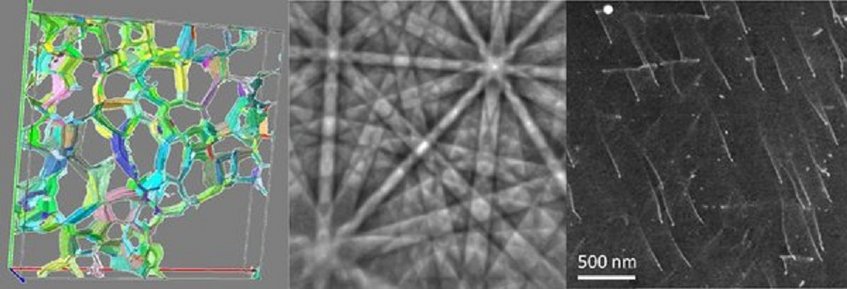We are working on understanding the underlying mechanism of hydrogen embrittlement susceptibility in a Fe 28Mn 0.3C (Wt.%) alloy on the micro and nano scale by exploring differentt hydrogen charging routes, for instance cathodic charging, gas charging and plasma charging. The defect behavior (dislocation density and arrangement, stacking faults, twins, ε-martensite, residual stresses) is investigated using deformation experiments coupled with electron channeling contrast imaging (ECCI) technique in both charged and uncharged conditions.Local residual stresses are measured with cross-correlation EBSD.In order to investigate the role of grain boundaries and stacking faults as hydrogen trapping sites, we also perform site-specific atom probe tomography (APT) studiesafter charging the samples with hydrogen/deuterium.
more

